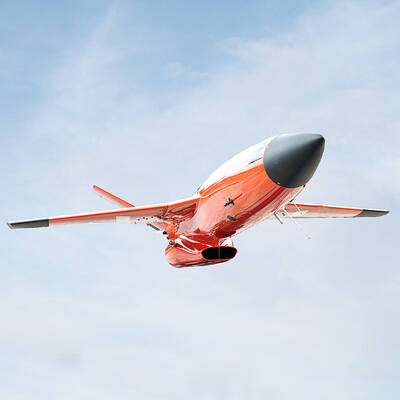Faced with a gloomy economic outlook, the Cabinet yesterday approved the fiscal budget for next year, with the largest year-on-year increase in expenditures earmarked for projects designed to boost economic growth.
The proposed budget allotment for economic development projects was set at NT$272.6 billion (US$9.1 billion), an increase of 1.6 percent, or NT$4.4 billion, compared with this year.
That would account for 14 percent of total government spending of NT$1.9446 trillion for next year. The additional NT$4.4 billion is to be used in the construction of railways, mass rapid transit systems, and agricultural and farm village development projects, the proposal showed.
“The problem of economic adversity was of most concern when we wrote the budget,” Directorate-General of Budget, Accounting and Statistics (DGBAS) Minister Shih Su-mei (石素梅) told a press conference after the meeting.
Compared with this year’s budget, the Cabinet proposed cuts in expenditures for defense; education, science and culture; community development and environmental protection programs; and debt repayment items, except for expenses in economy and statutory spending in social welfare programs, retirement pensions, and general fund subsidies for local governments.
Shih said the economic slump and uncertainty put the DGBAS “in a difficult situation” to meet all budget requests made by all government departments and agencies.
“What we focused on for next year was mainly to enlarge the budget for public construction projects to stimulate economic growth,” Shih said.
For economic development, the government has earmarked NT$191.2 billlion in public construction projects, an increase of NT$6.1 billion, or 3.3 percent, compared with this year, the proposal showed.
However, if expenditures from special budgets and state-owned enterprises’ budgets were included, the total budget for public construction projects next year would be NT$379.1 billion, a decrease of NT$19.4 billion compared with this year, mainly due to the completion of a project by state-owned oil refiner CPC Corp, Taiwan (CPC, 台灣中油) at the end of this year, Shih said.
Proposed expenditure on community development and environmental protection programs took up the largest share of cuts, with the budget for this category set at NT$17.2 billion next year, a decrease of 5.5 percent, or NT$1 billion.
This was followed by defense spending, which saw its budget cut by 0.7 percent, or NT$2.1 billion; education, science and culture, which decreased by 0.4 percent, or NT$1.6 billion; and debt repayment, which declined by 0.3 percent, or NT$400 million.
Shih said that the proposed defense spending of NT$307.3 billion next year, together with a fund of NT$83.3 billion operated by the Ministry of National Defense to be used in the reconstruction of military dormitories and military camps and arms production by the Bureau of Armaments and Acquisition, would account for 2.71 percent of the projected GDP of NT$14.43 trillion.
The figure would still be below a pledge President Ma Ying-jeou (馬英九) made when he was running for office in 2008 to increase defense spending to 3 percent of GDP.
The draft budget for next year projected revenues of NT$1.7302 trillion, an increase of 0.02 percent, or NT$400 million, compared with this year, and expenditures of NT$1.7298 trillion, an increase of 0.3 percent, or NT$5.8 billion.
The government’s estimated fiscal shortfall for next year was NT$214.4 billion.
Shih said the government would take out loans of NT$284.4 billion next year and use the NT$7 billion surplus of the previous fiscal year to meet the shortfall to repay debts of NT$77 billion.
The DGBAS said the government’s outstanding debts would rise to an all-time high of NT$5.269 trillion, or 37.1 percent of the average GNP of the past three years, though still lower than the 40 percent debt limit.

CROSS-STRAIT COLLABORATION: The new KMT chairwoman expressed interest in meeting the Chinese president from the start, but she’ll have to pay to get in Beijing allegedly agreed to let Chinese Nationalist Party (KMT) Chairwoman Cheng Li-wun (鄭麗文) meet with Chinese President Xi Jinping (習近平) around the Lunar New Year holiday next year on three conditions, including that the KMT block Taiwan’s arms purchases, a source said yesterday. Cheng has expressed interest in meeting Xi since she won the KMT’s chairmanship election in October. A source, speaking on condition of anonymity, said a consensus on a meeting was allegedly reached after two KMT vice chairmen visited China’s Taiwan Affairs Office Director Song Tao (宋濤) in China last month. Beijing allegedly gave the KMT three conditions it had to

STAYING ALERT: China this week deployed its largest maritime show of force to date in the region, prompting concern in Taipei and Tokyo, which Beijing has brushed off Deterring conflict over Taiwan is a priority, the White House said in its National Security Strategy published yesterday, which also called on Japan and South Korea to increase their defense spending to help protect the first island chain. Taiwan is strategically positioned between Northeast and Southeast Asia, and provides direct access to the second island chain, with one-third of global shipping passing through the South China Sea, the report said. Given the implications for the US economy, along with Taiwan’s dominance in semiconductors, “deterring a conflict over Taiwan, ideally by preserving military overmatch, is a priority,” it said. However, the strategy also reiterated

‘BALANCE OF POWER’: Hegseth said that the US did not want to ‘strangle’ China, but to ensure that none of Washington’s allies would be vulnerable to military aggression Washington has no intention of changing the “status quo” in the Taiwan Strait, US Secretary of Defense Pete Hegseth said on Saturday, adding that one of the US military’s main priorities is to deter China “through strength, not through confrontation.” Speaking at the annual Reagan National Defense Forum in Simi Valley, California, Hegseth outlined the US Department of Defense’s priorities under US President Donald Trump. “First, defending the US homeland and our hemisphere. Second, deterring China through strength, not confrontation. Third, increased burden sharing for us, allies and partners. And fourth, supercharging the US defense industrial base,” he said. US-China relations under

The Chien Feng IV (勁蜂, Mighty Hornet) loitering munition is on track to enter flight tests next month in connection with potential adoption by Taiwanese and US armed forces, a government source said yesterday. The kamikaze drone, which boasts a range of 1,000km, debuted at the Taipei Aerospace and Defense Technology Exhibition in September, the official said on condition of anonymity. The Chungshan Institute of Science and Technology and US-based Kratos Defense jointly developed the platform by leveraging the engine and airframe of the latter’s MQM-178 Firejet target drone, they said. The uncrewed aerial vehicle is designed to utilize an artificial intelligence computer